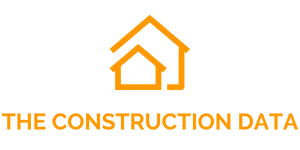
Smart Building Sensors Market Report: Key Players & Radar Overview
The smart building landscape is undergoing a seismic shift as advanced technologies such as the Internet of Things (IoT), artificial intelligence (AI), and cloud computing converge to redefine how buildings are managed, optimized, and experienced. According to “Smart Building Sensors, 2025: A Frost Radar Report”, now available via ResearchAndMarkets.com, the global smart building sensors market is set to experience robust growth in the coming years. This growth will be driven by an increasing emphasis on operational efficiency, health and safety standards, sustainability imperatives, and the digital transformation of the built environment.
Comprehensive Market Assessment
The report delivers a detailed evaluation of the top innovators in the smart building sensors sector, using Frost & Sullivan’s proprietary Radar benchmarking methodology. It segments the competitive landscape into three core categories, each representing a specialized area of application within smart buildings:
- General Smart Building Sensor Providers – These companies offer versatile sensor solutions designed to monitor a wide range of parameters such as temperature, humidity, light, occupancy, and energy usage.
- Indoor Air Quality (IAQ) Specialists – This group focuses on sensors that track pollutants, volatile organic compounds (VOCs), carbon dioxide (CO₂), and other factors critical to indoor environmental quality.
- People Flow and Occupancy Intelligence Specialists – These innovators provide occupancy detection, space utilization, and foot traffic analytics, which are essential for smart facility management and dynamic workspace planning.
Together, these segments illustrate the multifaceted role sensors play in the transformation of conventional buildings into intelligent, responsive ecosystems.
Driving Forces Behind Market Acceleration
The report identifies several transformative factors that are catalyzing rapid innovation and adoption in the smart building sensors space:
1. Technology Integration and AI-Powered Automation
With advances in sensor miniaturization, wireless connectivity, and machine learning (ML), smart building sensors are becoming increasingly capable of delivering actionable intelligence in real-time. AI-driven analytics platforms can now process large volumes of sensor data to optimize HVAC systems, lighting, and energy usage dynamically, reducing waste and extending asset lifespans through predictive maintenance.
2. Sustainability and Decarbonization Imperatives
As global carbon reduction targets become more aggressive, commercial building owners and managers are under pressure to comply with energy-efficiency standards and environmental regulations. Smart sensors play a pivotal role in this transition by enabling real-time monitoring of energy consumption, emissions, and air quality, while also supporting building certifications such as LEED (Leadership in Energy and Environmental Design), WELL, Fitwel, and RESET.
3. Focus on Occupant Health and Wellness
The post-pandemic emphasis on healthier indoor environments has elevated the demand for IAQ sensors and smart HVAC integration. Organizations in North America, Europe, and Asia are increasingly investing in IAQ monitoring tools that help ensure compliance with health standards, improve occupant productivity, and support long-term wellness goals. This demand is particularly strong in schools, offices, hospitals, and retail environments.
4. Cloud-Enabled and Interoperable Ecosystems
Cloud computing and edge processing are enabling seamless integration of sensor data across disparate systems, ensuring that buildings can operate as unified, intelligent systems. Sensor fusion—combining data from multiple types of sensors—delivers richer insights, empowering building managers to make more informed decisions. Open platforms and API-based architectures are fostering greater interoperability among vendors, further accelerating market growth.
5. Expansion of Predictive Maintenance and Data Monetization
Building owners, especially those managing large facilities over 50,000 square feet, are increasingly turning to digitized maintenance and performance analytics to reduce downtime and operational costs. Predictive maintenance capabilities, powered by sensor data and AI, are becoming value-added services offered by leading vendors, opening up new revenue streams and long-term customer engagement opportunities.

Regional Insights and Emerging Opportunities
The Radar report highlights strong regional growth in Asia-Pacific, North America, and Western Europe, driven by different but complementary trends:
- Asia-Pacific is witnessing a surge in smart building deployments, supported by urbanization, government incentives, and a strong focus on sustainable development.
- North America remains a hub for innovation, especially in workspace analytics and health-focused solutions.
- Europe is advancing with stringent regulations on carbon emissions and a mature green building movement.
Emerging markets in Latin America, the Middle East, and Africa are expected to follow, with retrofitting projects and smart city initiatives creating long-term demand for modular, scalable sensor solutions.
Benchmarking Framework and Competitive Landscape
Frost & Sullivan’s Radar benchmarking platform evaluates companies on two axes: Growth and Innovation. This dual-metric system provides insights into a firm’s potential to disrupt and lead in the smart building sensor market over the next five years.
Key evaluation criteria include:
- Vision and Strategy Alignment
- Product Portfolio Strength
- Customer Acquisition and Retention Strategies
- Technological Advancement
- Scalability and Ecosystem Integration
- Market Penetration and Geographic Reach
The report lists the following companies as top innovators to watch:
- Airthings – Known for its advanced indoor air quality monitoring solutions and consumer-friendly interfaces.
- Aranet – Offers wireless environmental monitoring systems suited for industrial and commercial buildings.
- ELSYS – Specializes in LoRaWAN sensors for temperature, occupancy, and energy management.
- Milesight – A provider of AIoT solutions integrating video surveillance, sensors, and data analytics.
- Pelican Wireless – Focuses on intelligent wireless HVAC control systems tailored for large facilities.
- Pressac Communications – Designs smart sensor technology that integrates with BMS and IoT platforms.
- TEKTELIC – A prominent name in LoRaWAN-based environmental sensors offering long battery life and scalability.
- VergeSense – Delivers AI-powered workplace analytics solutions focused on occupancy and space utilization.
- Xovis – A leader in people flow and foot traffic analytics, widely used in retail and transportation hubs.
These companies exemplify innovation, adaptability, and the ability to address the evolving demands of the smart building sector.
A Future of Data-Driven Building Intelligence
The report concludes that the smart building sensors market will play a pivotal role in redefining the operational and experiential paradigms of commercial buildings over the next decade. As buildings continue their evolution into intelligent ecosystems, sensors will form the nervous system that powers decision-making, automation, and human-centric design.
From optimizing energy use to enabling flexible workspaces and ensuring indoor air safety, smart building sensors are not only helping facilities run more efficiently—they’re also improving the quality of life for occupants and helping organizations meet their environmental, social, and governance (ESG) objectives.
Vendors that can offer scalable, interoperable, and intelligence-enhanced sensor platforms will be well-positioned to lead in this space. Meanwhile, facility managers and real estate developers are encouraged to view sensor integration not just as a compliance necessity, but as a strategic investment that unlocks value through performance, resilience, and sustainability.




